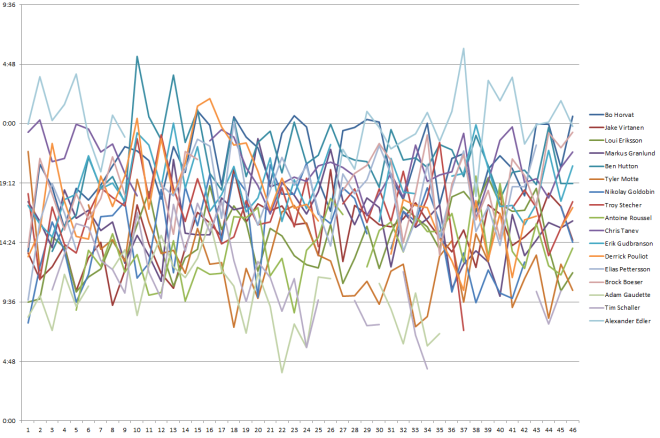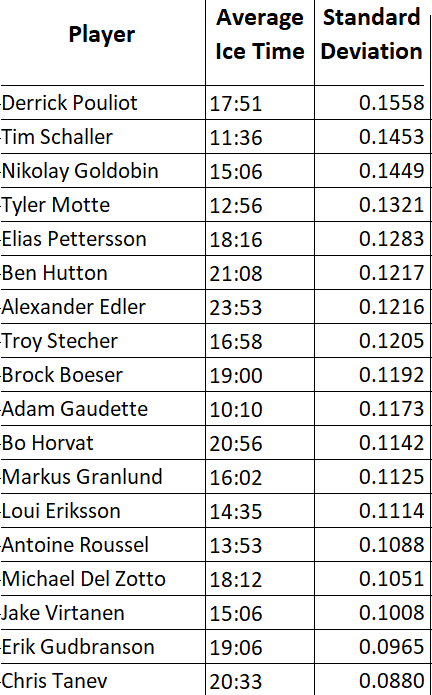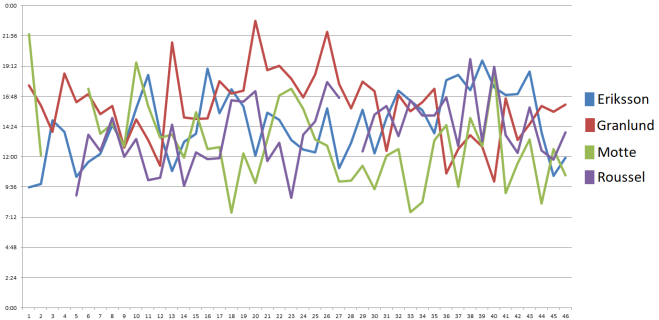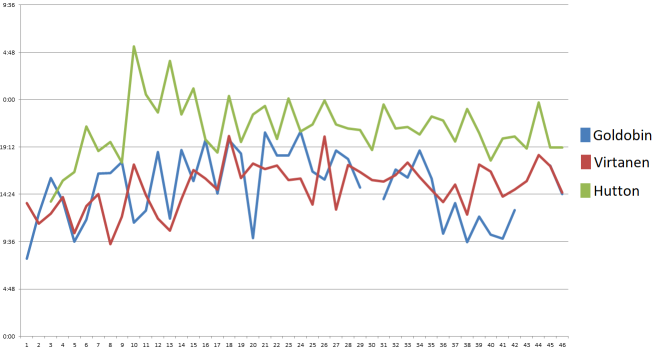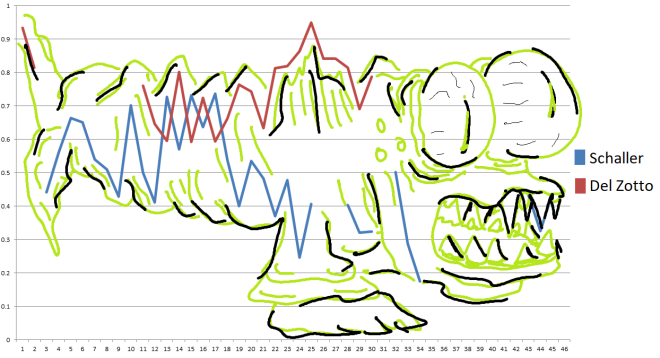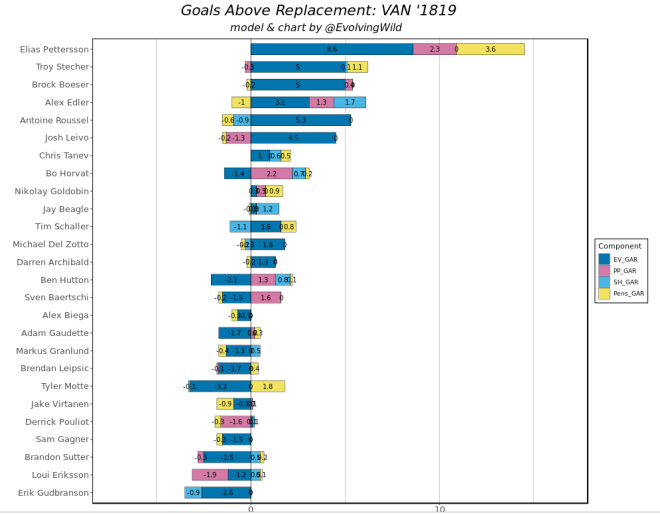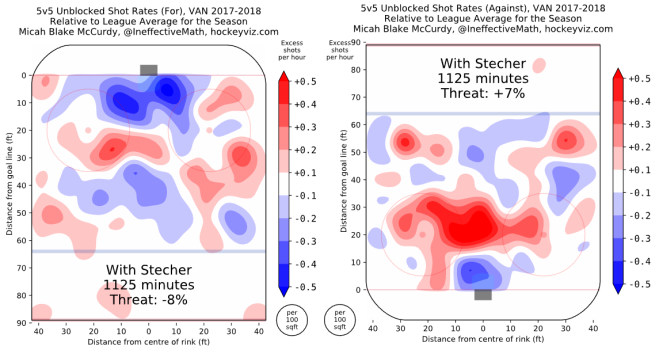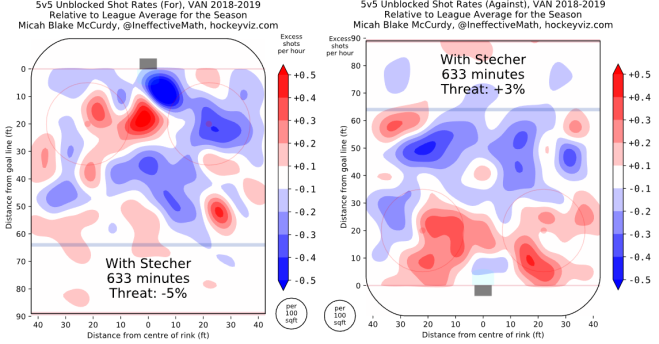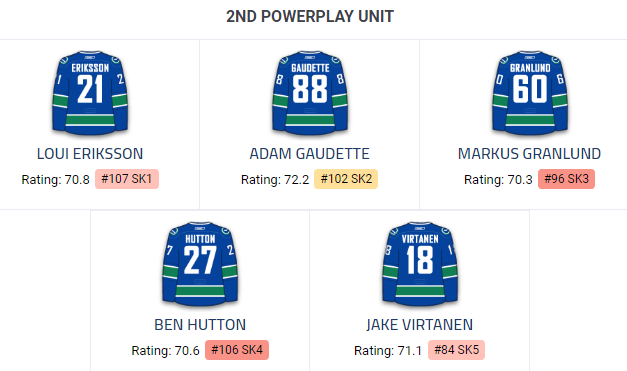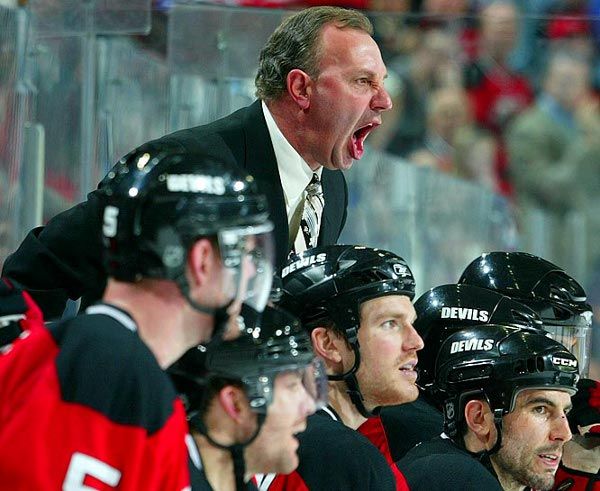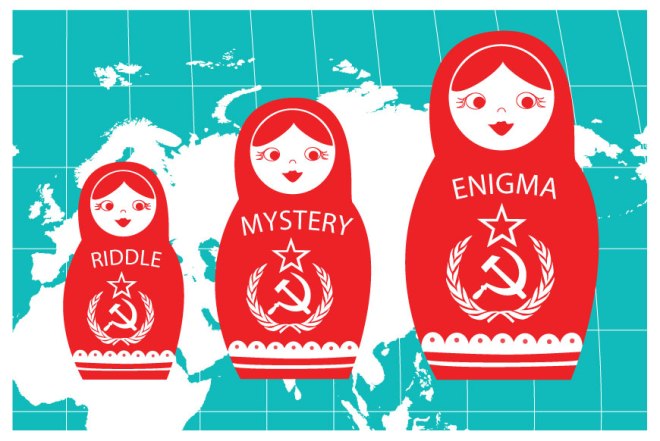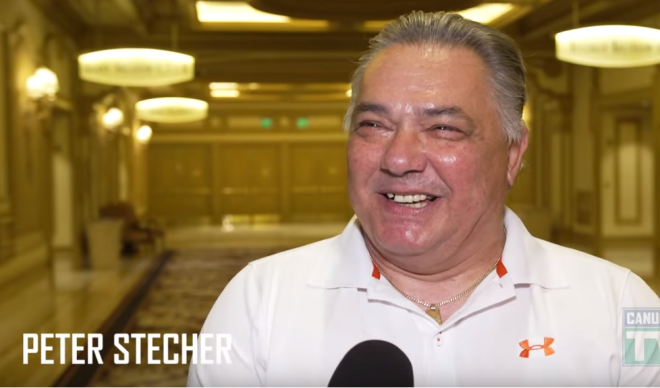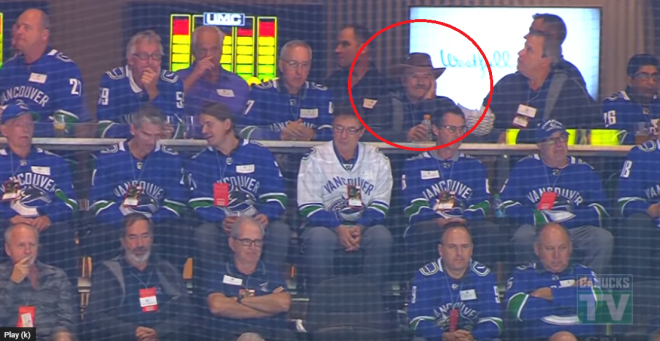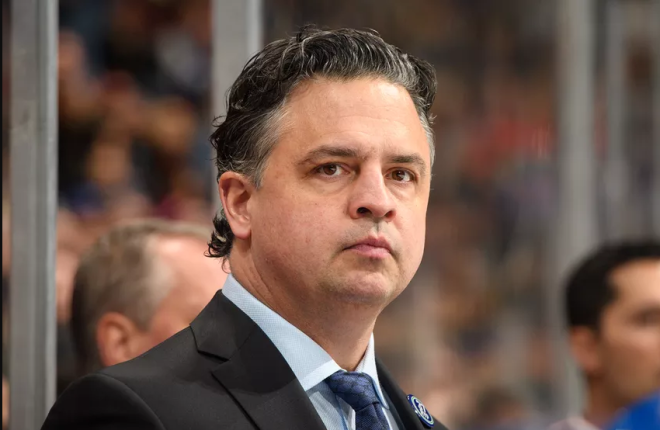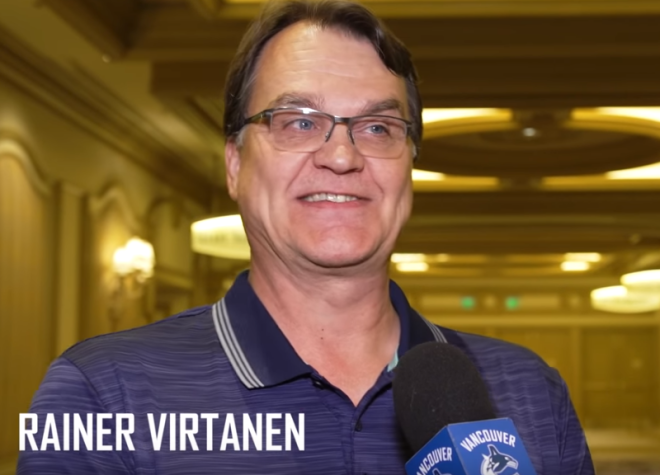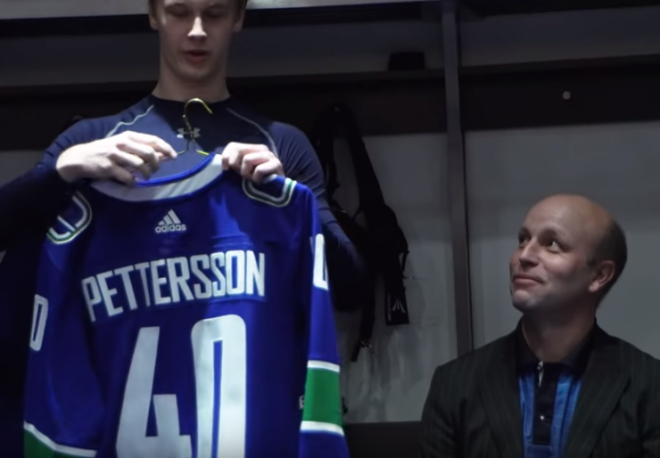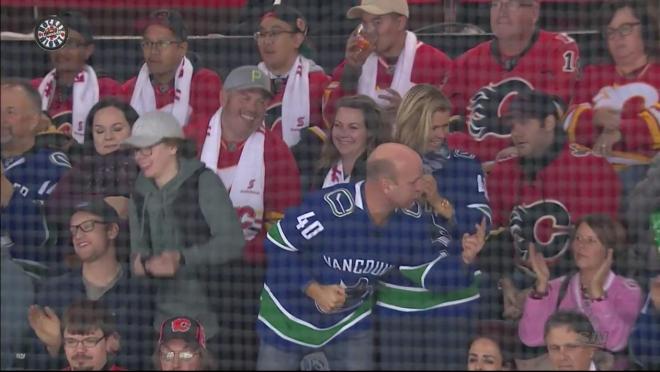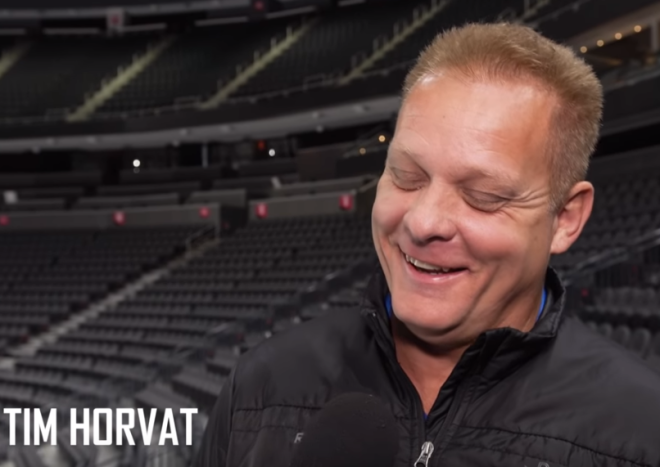Prologue
A big white disc rose softly above a dark sleepy city on Tuesday, February 5th. The disc was the Moon, and the city was Vancouver.
The Moon was comfortable: the yappin’ year of the Dog was over, the trufflin’ year of the Pig was about to begin, and the Vancouver Canucks were sitting with about 30% odds to make the NHL playoffs. Surprised at the Canucks’ success so far, the Moon hopped on Google to see what was going on.
The Canadian media was typically divided: for every article suggesting that the Canucks could make the playoffs, there was one reminded us that they could fall off a cliff. For every article wondering how far that cliff might fall, there was one speculating how the moss forming on the side of the cliff might affect the Toronto Maple Leafs.
The Moon was confused. No one seemed know what this team really is or what it could be.
And so I thought maybe we could turn to the Chinese Zodiac for answers.
Introduction of Study:
This post will examine the relationship between the Chinese Zodiac and the Vancouver Canucks’ performance in the regular season. It is the first of three posts on the subject:
This post (1/3) will cover the Canucks’ regular season results
Sunday’s post (2/3) will cover the Canucks’ playoff results
Monday’s post (3/3) will cover the Canucks’ draft results
Just in case you’re already bored and don’t read on: the Canucks were actually created in the year of the Dog (1970). That means the number 11 is particularly unlucky for the team.
So yeah, this is legit.
The Chinese Zodiac
The Zodiac consists of 12 creatures in a specific sequence: Rat, Ox, Tiger, Rabbit, Dragon, Snake, Horse, Goat, Monkey, Cock, Dog, and Pig. Each is assigned to a specific year and has specific traits.
The Canucks Regular Season History

The first tough reminder here is that the Canucks has played a lot of sub-500 hockey in their history. It’s difficult to say that any year is really that auspicious for a club that has returned home winless from the Stanley Cup Final 3/3 times and has a high of 52.8 win% with any given sign.
Furthermore, it needs to be said that there can be a pretty extreme variance in results for a given sign: the year of the Ox, for example, includes both the excellent 08/09 season as well as the disastrous 72/73 season. The Cock brought Pettersson at the 2017 draft, but also a leaguewide lockout in the 04/05 season, which many feel denied a superb Canucks core a year of contention in their prime.
Regardless, certain years seem good to the Canucks and others spell doom.
The Good(ish):
Year of the Monkey
1979-80, 1991-92, 2003-04, 2015-16
This may be a surprise, but the year of the Monkey saw good returns for the squad, including Bure’s debut with the team (91/92) a strong 03/04 season, and the breakout sophomore season of Stan Smyl. The Monkey is the lord of chaos, however, and this includes some of most serious blackmarks on Canucks history, including the tragic Bertuzzi-Moore incident (03/04) and Willie Desjardin’s tough second season as head coach (15/16).
Year of the Goat
1978-79, 1990-91, 2002-03, 2014-15
While the year of the Goat was tough on the team the first couple times around, it’s been good in the 21st century. This saw the heyday of the West Coast Express in the 02/03 season and the surprise bounce back of the 2014/15 season. Now, you may be thinking that 2015 was actually a disappointment given the team’s early exit in the playoffs, but please take a second to remember that they drafted Brock Boeser – a literal GOAT – 2 months later.
Year of the Dragon
1975/76, 1987-88, 1999-00, 2011-12
The results in this year are buoyed by the Canucks second of back-to-back President’s Trophies in the 2011/12 season, as well as a surprise playoff appearance in 1975/76. We also saw Trevor Linden drafted in 1988. 2012 also stands out to me as it was the first time I met Jason Botchford personally at a wheat-and-greet. This year doesn’t bode particularly well for the Canucks in the playoffs, however (more on this Sunday.)
The Bad:
Year of the Tiger
1973/74, 1985/86, 1997/98, 2009/10
The one bright spot is the 2009-10 season; where the Sedin core became too good for the NHL, Hank picked up the Art Ross, but the simple tune of Chelsea Dagger transformed from goal song to literal poison. The team sucked in the 70s and 80s as per normal.
But worst of all, a single shaved, stripeless Tiger rained misery on this franchise in the ’98 season: Mark Messier.
Year of the Ox
1972/73, 1984/85, 1996/97, 2008/09
This is another example of the Canucks’ renting a hot-windowed suite on the southside of Pooptown; they were sub-50 in win-percentage every Ox-year until 2009. And what happened then? Doo – dododo…
Year of the Rat
1971/72, 1983/84, 1995/96, 2007/08
It seems crazy, but this has nothing to do with Marchand. Frankly, I’m as disappointed as you are. I started this whole article hoping this joke would work. But it doesn’t. Instead, the year of the Rat stands out as one where the Canucks’ didn’t have too many highs or too many lows; they were just pretty mediocre – the last kid down the slide in the playoffs in ’84 and ’96 – and missing out entirely otherwise.
The Rest:
Year of the Rabbit
1974-97, 1986-87 1998/99, 2010/11
It wasn’t the golden ticket, but by god it was something. The Sedins define the Year of the Rabbit for Vancouver, drafted in 1999 and leading the team to one game from the Stanley Cup in 2011. These two weird Swedes redefined class and creativity in the National Hockey League for nearly 20 others.
Year of the Horse
1977-78, 1989-90, 2001-02, 2013-14
This is one of the Canucks’ worst Zodiac signs on the whole, but it’s more mired by mediocrity than it is a disaster. The Canucks slipped on a banana peel in ’78, smacked their faced into it in ’90, got up and shook it off in ’02, and then were coached by John Tortorella in ’14.
Year of the Snake
1967-77, 1988-89, 2000-01, 2012-13
You can’t have the yin without the yang, my friend: the year of the Snake brought Canucks both the beginning of great things (Linden’s rookie season in ’89) and the end of shit things; Messier left.
Year of the Cock
1980-81, 1992-93, 2004-05, 2016-17
“The 2004-05 team could have made a legit run,” I whisper as my hand swats at the left turn signal.
“What’s that?” my fiancée asks, thumbing through her purse.
“Nothing. I’m in the mood for a snack. Let’s stop somewhere.”
Year of the Dog
1981-82, 1993-94, 2005-06, 2017-18
Remember, we are only talking regular season. In the post-season, of course, the year of the Dog is one of pure heroics for the Vancouver Canucks. But when it comes to regular season results, this is the Canucks’ most average: 0.481, 0.506, 0.561, and 0.445 over the last four cycles.
Year of the Pig (This Season)
1970-71, 1982-93, 1994-95, 2006-07, 2018-19
This is where it gets tricky. The Canucks average just 0.492 on points in the year of the Pig, but they’ve also surprisingly made the playoffs 3 out of 4 times.
But in statistics we must look at trends, and the Canucks trend to a downturn from Dog to Pig years. As such, the Zodiac suggests that the Canucks will finish slightly lower point percentage from last year.
Prediction for this Year:
History tells us the Canucks will end up with a surprisingly weak point total this year, just around 72 points, good for something around 25th in the league. The Canucks are just 18 points off from last year’s final standings with 27 games remaining. They’ll have to go 1 – 2 – 0 for the remainder of the season to match it. That seems pretty darn rough for a somewhat healthy squad.
That might sound like an insane drop given that they are in a playoff spot, but as of writing the Canucks are also only 4 points away from 25th.
Prediction for Coming Years:
This is where things get scary. The ensuing years of the Rat, Ox, and Tiger have all been traditionally tough on the Canucks. The Chinese Zodiac seems to be firmly in the “Linden” camp, arguing that this team is still a few years away from meaningful contention.
It gives this team a timeline of 3 more years of struggle before they begin to dominate their division in the 2023 season.
Until Next Time
All that said, the Pig shows us a history of the Canucks squeaking into the playoffs. I guess wee-wee-wee’ll have to talk about that on Sunday when we look at playoff results.



